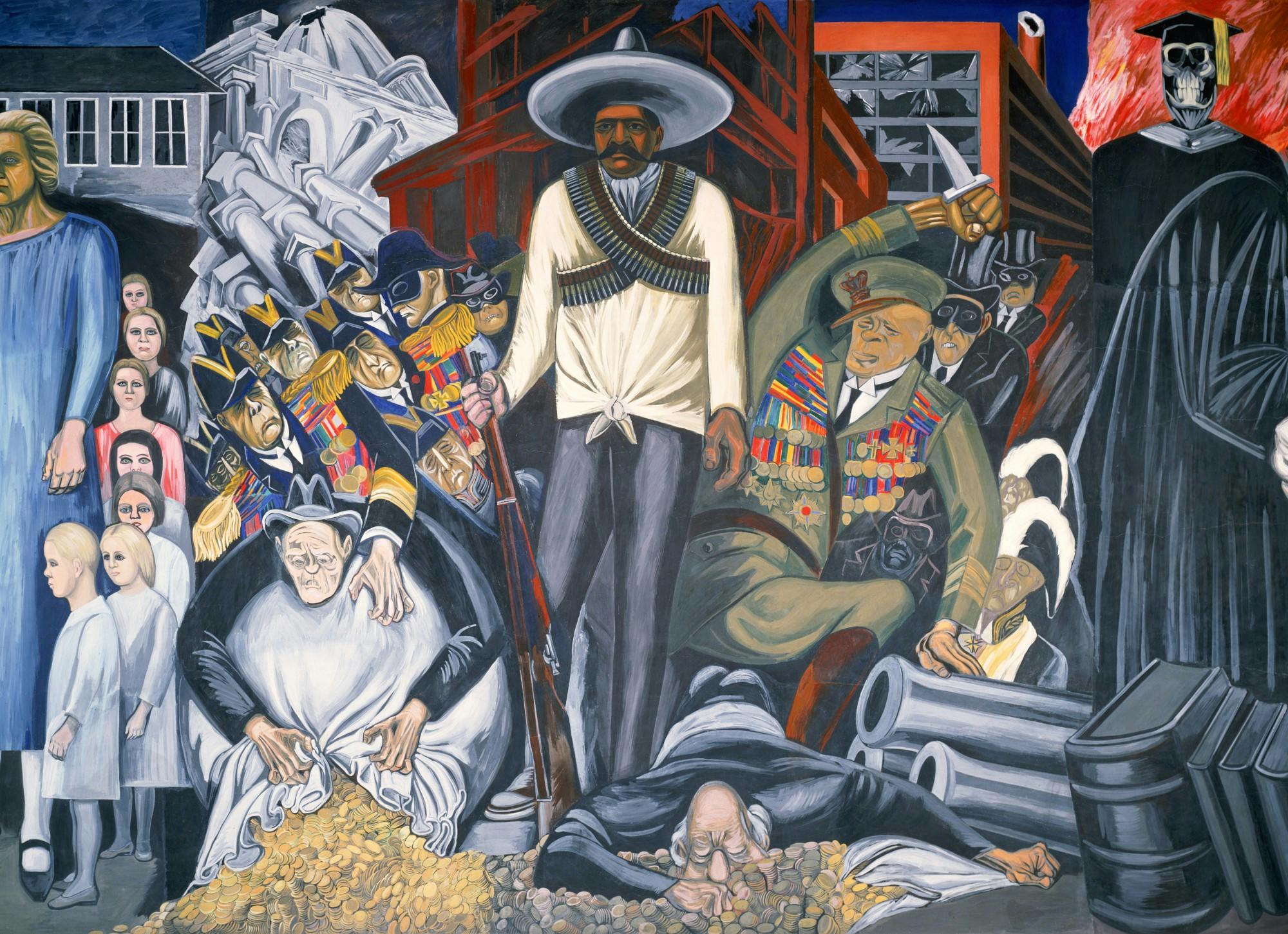On Thursday, Feb. 17, The Manton Foundation’s annual lecture on “The Epic of American Civilization” murals by José Clemente Orozco featured Luis Vargas Santiago, a Mexican art historian and curator. Santiago’s talk in the Hood Museum of Art’s Gilman Auditorium examined how Mexican revolutionary Emiliano Zapata has been depicted in Orozco’s work and in Mexican history.
The lecture concentrated on the diaspora of Hispanic populations in the United States through the lens of Zapata’s role in the 1910–1920 Mexican Revolution. Santiago prefaced his talk by explaining Zapata’s attempt to return farming land from the wealthy back to the working class population through a peasant revolt. For Santiago, Zapata is central to the Mexican imagination.
“When I moved to the states to pursue my Ph.D. at [the University of Texas at] Austin, I was just starting my research on images of Emiliano in Mexico,” Santiago said. “What surprised me was how Zapata had such a vast presence in the States. This is part of the reality that forced people into exile due to economic or political reasons. We always tend to think about Latino people going abroad and never returning. Orozco tried to show that through Zapata.”
According to Santiago, Orozco — who exiled himself in the United States — painted Zapata in great detail for the mural. The image of Zapata in the Orozco murals depicts swords and bullets near Zapata’s face.
Santiago stressed that Orozco and Zapata were on opposite sides of the Mexican Revolution. Still, Zapata’s depiction in Orozco’s work exemplifies diasporic and borderless imaging, he added.
“What I’ve discovered is that works like Orozco’s mural are both tied to Mexico and the [United] States,” Santiago said. “You can start mapping or sketching a very complex set of relationships where you’ll see public policy, diplomatic relations, immigration, cultural exchange and transculturation involved.”
Art history professor and mural expert Mary Coffey said that Santiago’s work on heroic figuring is needed to explore Orozco’s work across time, space and national boundaries.
“I knew of Luis’s work, and I thought that the lens of Zapata was a great way to bring together the work of the mural and to explore themes of agrarian politics that are of great interest to people who are interested in the mural,” Coffey said.
According to Santiago, Zapata’s legacy is defined both by the tangible impact he had on Mexican history and the symbol he has become for Mexican resistance and cultural preservation. He recalled backlash to a gay representation of Zapata that he chose to include in a show he curated for the 100th anniversary of the revolutionary figure’s death.
“Zapata’s everlasting presence became clear to me at the exhibition in 2019, when there was a representation of a queer Zapata,” Santiago said. “The [culture of machismo] of Mexico said that it was disrespectful and not a proper representation of him. On the other hand, gay activists said that this is what Zapata represents.”
Santiago added that Zapata’s depiction in the Orozco murals underscores how audience perceptions of Mexican figures can vary.
“There is a conflict between the way we see ourselves in Mexico and America,” Santiago said. “We think we are so different, but we need that difference to recognize ourselves on our own terms. The mural and Zapata’s representation reinforces American nationalism in terms of how different we are.”
Professor Analola Santana of the Latin American, Latino & Caribbean Studies Department took students from her class, THEA 10.68, “Staging Rebellion: Dissidence in Latinx American Theater,” to the lecture. Nyah Cordero ’24, a student in the class, said that she was always interested in the ways Hispanic revolutionaries are depicted in America.
“I went into the lecture [knowing nothing about the murals],” Cordero said. “It’s been interesting to learn about revolutionaries like Zapata through a theatrical and now artistic lens.”
Elda Kahssay ’24, another of Santana’s students, said the class had learned a bit about Zapata, but that she had been unaware of his depiction in the Orozco murals prior to the lecture.
“His lecture showed me that diaspora really is everywhere, quite literally in the basement of the library,” Kahssay said.
Hood Museum fellow Jayde Xu, who also attended the lecture, said she was drawn to the event because of its relevance to modern social movements.
“For someone making art, it’s really interesting and important to understand the environment where this great art is born,” Xi said. “Looking at the mural and even going to this talk is the way we can reflect, think and actualize our own history.”
According to Professor Coffey, the mural’s location in Baker-Berry Library serves as a backdrop to students’ academic lives at Dartmouth.
“We’re often reminded of the kind of Anglo history of the College,” Coffey said. “But the College has these other histories, and this one’s very prominent and very visible. The mural makes it visible. Dartmouth is not just one thing and it doesn’t have just one history.”
Coffey stressed the multitude of resources available to Dartmouth students to explore the murals and Dartmouth’s multiple histories.
The murals are a product of multiple cultures coming together. According to Santiago, the U.S.-Mexico border is not just geographically bound — it is also internalized, transcending through identities within the United States as well.
“Orozco’s representation of Zapata is nuanced and complex like the Mexican diaspora,” Santiago said. “What’s important is that Orozco always brings political conversations with complexity. I see that in the murals at Dartmouth. You cannot simply praise it and say that this is a very positive representation of Pan-America. It is integrated with imperialism. We need to acknowledge and analyze that.”




